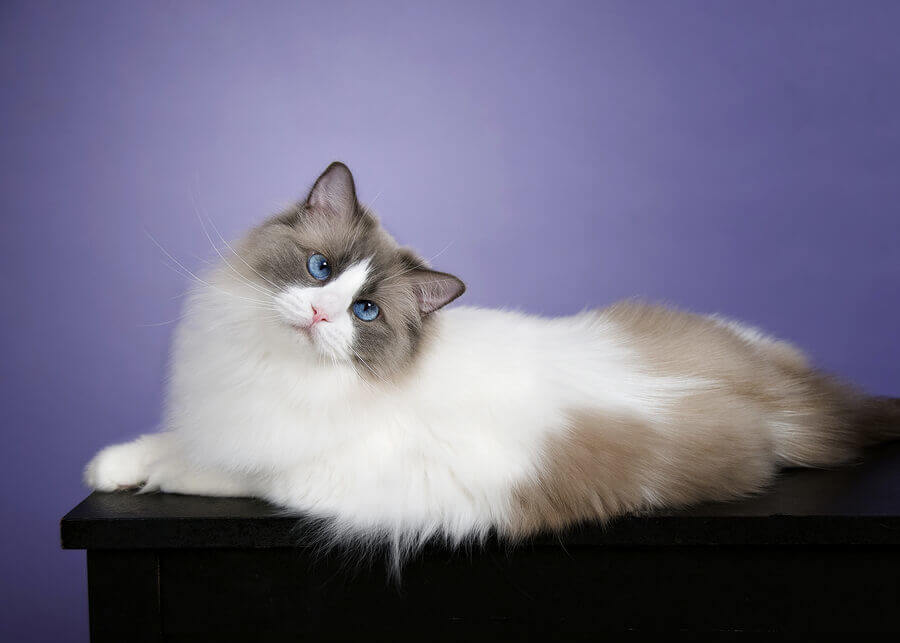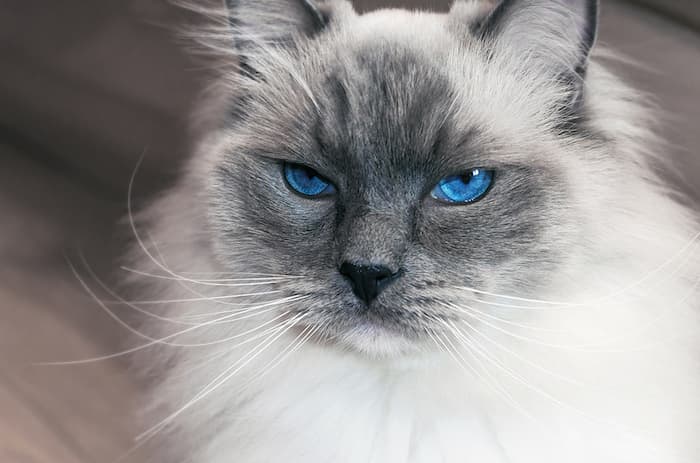Ragdolls are extremely docile cats that owe their name to their habit of going completely limp like a ragdoll when somebody picks them up. They are famously tolerant and even-tempered: They are the sort of cat that will allow a child to dress them up and wheel them around in a baby carriage. They are not particularly active or vocal, however. Ragdolls are intelligent and can learn how to play fetch.
How much attention does a Ragdoll need?
Ragdolls are large and can take four years to reach maturity. During this time, they will need to be fed more often than older cats. Once they stop growing, they should be fed somewhat less to prevent obesity. A Ragdoll’s long fur should be brushed at least once a week. They molt during the spring and summer, so they will need to be brushed more often to prevent mats. Ragdolls have a poor danger sense and tend to be too trusting and should therefore be kept indoors.
Does a Ragdoll have specific dietary needs?
Ragdolls are big cats and therefore need more protein than their smaller fellows and should therefore be given high-end wet food. Since they have long fur, they should be given food for indoor cats that include a hairball control formula. Ragdolls need food formulated to promote joint health, for their size increases the risk of their developing arthritis as they get older.
What are the most common health issues of the breed?
Ragdolls have a gene for Hypertrophic Cardiomyopathy (HCM). It is the most common form of heart disease in cats, and it causes an abnormal thickening of the heart muscle. Affected cats usually start showing symptoms as young or middle-aged adults, and the condition can eventually cause heart failure. Fortunately, there is a DNA test for the disease. Ragdolls are also prone to kidney and bladder problems; there are blood tests for these conditions.
More Cat Breeds


